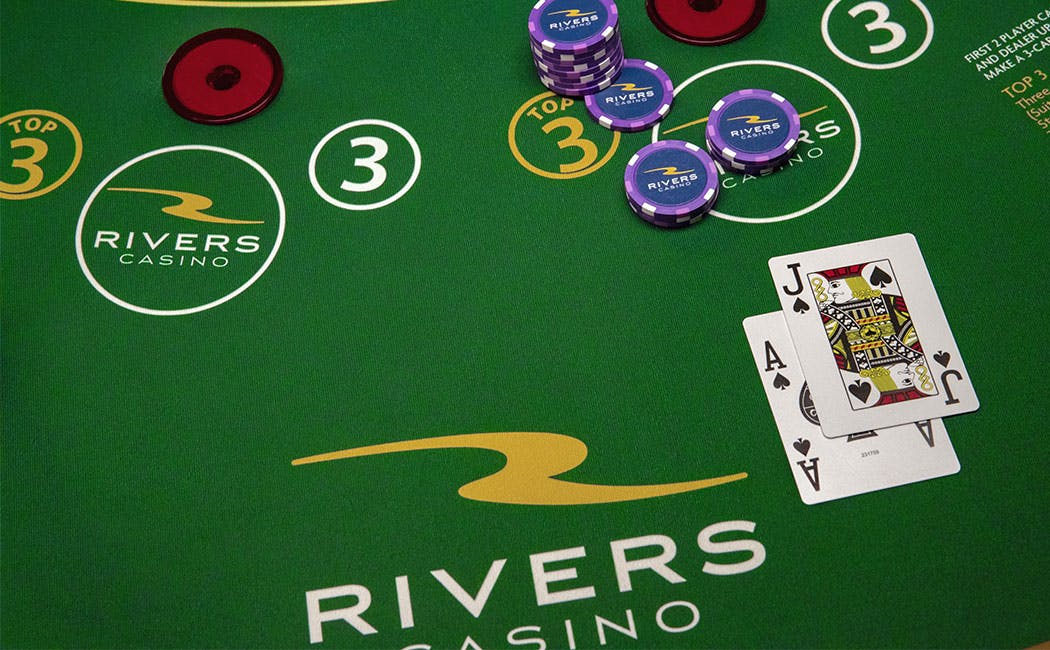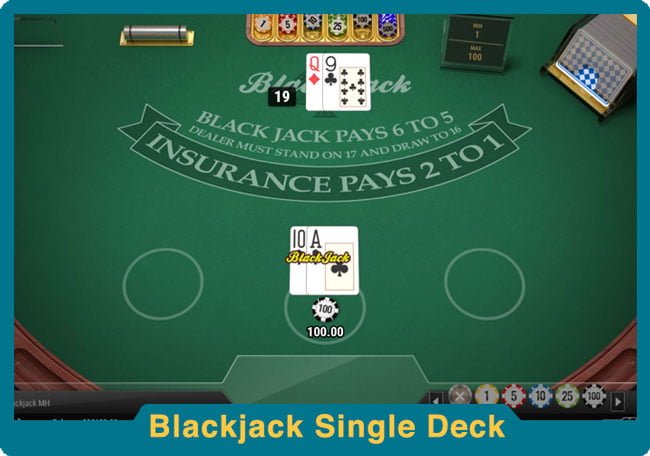Blackjack Number 2
- Weigh the odds and place your bets - it's 21 or bust! Count on a fun online game of Blackjack. Play for free online!
- If it is a ten-card, it is turned up, and those players who have made the insurance bet win and are paid double the amount of their half-bet - a 2 to 1 payoff. When a blackjack occurs for the dealer, of course, the hand is over, and the players' main bets are collected - unless a player also has blackjack, in which case it is a stand-off.
Blackjack Card Values. The part of the card that matters when playing Blackjack is its number value. For the actual numbered cards, you can gather that their card value is equal to the actual number they represent. Cards 2 through 10, no matter the suit, represent that number. Face cards, whether it’s a King, Queen, or a Jack, have a card. However, even though the return to player for blackjack is extremely high, it does feature a low variance as the highest payout for a single hand is limited to only 3 to 2 when you get blackjack. For instance, when compared to slot machines where players can sometimes walk away with thousands, players at blackjack tables are highly unlikely to.
The members of the blackjack community frequently debate on the subject of which card counting system is the best to use. The truth of the matter is this depends on what blackjack games one plays. Most card counting systems perform almost equally well when used against multiple-deck games.

The discrepancies in the systems’ performance become more pronounced when one plays single-deck blackjack. Multiple-level balanced systems with a side-count for the Aces significantly outperform unbalanced, level-one counting systems when cards are dealt out of a single deck.
- Bonus⋆80 Free Spins
- Bonus$300
- $500$600
Yet, most professional players and blackjack experts stand by the opinion that it is better to use simpler counting systems because simplicity and ease of use prevent human errors and mental fatigue. One such simpler counting system is the Red Seven. It was invented by Blackjack Hall of Fame inductee and prominent author Arnold Snyder who tackled it in his book Blackbelt in Blackjack.
Mr. Snyder was also the first expert to discuss how deck penetration affects the win rates of card counters. He insisted penetration actually has a bigger impact on the counter’s win rates than the actual counting system they use.
The truthfulness of this statement was substantiated by various computer simulations which established Mr. Snyder’s assumption was indeed correct. Mr. Snyder further laid out his thoughts on different counting systems, including the Red Seven, in his 2006 book The Big Book of Blackjack. In this article, we introduce readers to how the Red Seven card counting system works and how does it compare to other popular counting strategies used in blackjack.

The Mechanics of the Red Seven Counting System
We assume you are new to card counting so let’s explain in brief how does it work in general. Blackjack is a game based on conditional probability which means previous outcomes have an impact on the probabilities of future outcomes.
Once a given card has been dealt on the felt, it cannot make an appearance during the next round of play unless the dealer reinserts it into the pack and reshuffles. In blackjack, the high cards are good for the player so when there is an excess of high cards that remain to be dealt, the odds favor the player. Conversely, low cards work to the advantage of the house so when the remaining pack is rich in those, the odds shift in favor of the casino.
When employed properly, card counting systems like the Red Seven enable the player to determine the ratio between high and low cards that remain to be played. There is no need for you to memorize every single card that leaves the shoe by heart. All you need to do is track how many of the cards that have been played were low ones and how many of them were high ones.
You achieve this by assigning count values to every single card you see on the felt and then adding or subtracting this value to and from your current count. The Red Seven counting system assigns the following count values to the cards:
- Ace, King, Queen, Jack and 10 are counted as -1
- Low cards 2, 3, 4, 5, and 6 are counted as +1
- The red 7s (i.e. the 7 of diamond and the 7 of hearts) are assigned a value of +1
- The 8, the 9, and the black 7s (i.e. the 7 of spades and the 7 of clubs) are neutral and have a value of 0
It is obvious the Red Seven is sensitive to the suit of the 7s, hence the name. This renders it an unbalanced counting system. It is intentionally designed in this manner to eliminate the necessity of converting the running count into a true count. You keep a running count throughout the entire course of your betting session by adding and subtracting the values of the dealt cards.
Red Seven Counting System Additional TipsIf you are playing single-deck blackjack, the running count pretty much gives you an accurate idea about the advantage you hold over the house and vice versa. This is not the case when you engage in multiple-deck games, though. The higher number of decks in play dilutes the effect removing individual cards has on the odds.
This tendency is best demonstrated with examples. Suppose you are playing at a single-deck table and all four Aces hit the felt on the very first round of play. This fact obviously puts the player at a disadvantage because they now stand absolutely no chances at making blackjacks and receiving the extra 3 to 2 payout for this valuable hand.
This would not be the case if four Aces appear on the felt during a single round in a game that uses eight decks of cards, for example. Your odds of making blackjacks are diluted but they are not entirely eliminated because 28 Aces still remain to be dealt.
It is because of this peculiarity that balanced systems like the popular Hi-Lo require a conversion from a running count to a true count. To perform this conversion, the player divides their current running count by the overall number of decks that remain to be dealt. The player then uses this true count to determine whether they should increase their wager and if so, by what amount.
But the Red Seven is an unbalanced system where the players only keep an Initial Running Count (IRC) and do not have to perform a true count conversion. Unlike balanced systems which always start with and arrive at a count of 0 when all cards have been dealt, the Red Seven system starts with a negative integer.
The exact starting number depends on the number of decks in use. There is no need for you to convert your running count into a true count because the number of decks the game uses has already been taken into consideration. The starting number for the Red Seven system is established by multiplying the total number of decks in play by the number -2.
Thus, if you are playing against a single deck, your count starts at -2 but if you are playing a six-deck game, you start your count at -12. Below are the starting numbers depending on deck number for the common games of blackjack.
| Total Number of Decks in Play | Starting Number for the Red Seven System |
|---|---|
| 1 deck | -2 |
| 2 decks | -4 |
| 4 decks | -8 |
| 6 decks | -12 |
| 8 decks | -16 |
Despite this peculiarity of the Red Seven system, the player still arrives at a count of 0 if they go through the entire deck or shoe without making any counting mistakes. Some experienced players prefer not to count the 7s of diamonds and hearts separately. They assign a value of +0.5 to each 7, regardless of its suit instead. This approach is more taxing because it transforms an unbalanced level-one system into a more complex balanced level-two system.
Blackjack Number Chart
The Pivot Number
Similarly to other unbalanced systems, the Red Seven uses a pivot number to indicate the situations in which the player has an edge. It is established that when the running count gets neutral, i.e. it reaches 0, the player holds an advantage over the house of around half a percent. Respectively, the 0 is the pivot number for those who use the Red Seven system and helps them make better-informed decisions when it comes to varying their bet size.
Adjusting Your Bet Size and Playing Decisions with the Red Seven System
Some players avoid back-counting because it may attract casino heat. If wonging in and out of a game is not possible where you play, you should bet the table minimum during all negative running counts. Once you reach the pivot number for the Red Seven system, you should start increasing the size of your bets.
The bet sizing is influenced by the table conditions. In single-deck blackjack, the player is recommended to double their bet when they reach the pivot of 0, raise it to four units once the IRC increases to +2 and continue betting this amount until it drops again.
However, this is not the case when you apply the Red Seven in shoe games where you should not increase the bet size again until you arrive at a running count of +6. This calls for a raise to three units. One easy way to remember the bet sizing is to divide the current running count by 2.
Therefore, if you arrive at a running count of +8, you should increase your wager to four units. When it reaches +10, you need to bet five units and when it escalates to +16, you should wager eight units. However, the situations when the count reaches +16 arise on extremely rare occasions.
Adjusting Your Bet Size and Playing Decisions with the Red Seven System – Additional TipsSome experienced players prefer to further increase their edge by departing from basic strategy when the count justifies it. One of the most important playing deviations for card counters has to do with buying insurance.
The likelihood of the dealer hitting blackjacks increases during positive counts and vice versa. You can make more accurate insurance decisions by using the knowledge the Red Seven system gives you about the composition of the remaining cards.

The number of decks in use again plays a role. Thus, players are recommended to start taking insurance in pitch games when the running count arrives at the system’s pivot of 0 or gets higher. Those who prefer to play multiple-deck blackjack should start accepting insurance when the running count gets to +2 or above. These playing deviations are simple to memorize but have a significant impact on your overall long-term expected value.
Roulette Number 2
Several other playing adjustments are recommended when the count escalates to +2 or higher. The first playing deviation concerns a hand that totals 16 against a dealer’s 10. Basic strategy tells us to hit but those who use the Red Seven system should stand on positive running counts instead because of the higher chance of busting.
Another playing deviation from basic strategy concerns a hand of hard 12 when the dealer shows a deuce. You are supposed to stand instead of hitting the hand on positive counts of +2 or above. You can further increase your long-term profits by doubling on your 10s against all dealer upcards on counts of +2 and more. These four playing deviations alone can significantly improve your overall win rates with the Red Seven system.
To wrap things up, the Red Seven is considered one of the simplest and most efficient card counting systems out there. It yields a very high betting correlation of 0.98, a playing efficiency of 0.54, and a decent insurance correlation of 0.78.
Blackjack 21 Number
It gives you a very accurate idea of how you should move your bet size in accordance with the count but similarly to the Hi-Lo, it is not as efficient when it comes to playing deviations. Another shortcoming of this system is that it is suit-dependent. This confuses players who are not accustomed to taking the suits into consideration while counting. Despite its negligible flaws, the Red Seven is a very good counting system to try, especially for those who insist on simplicity and betting efficiency.